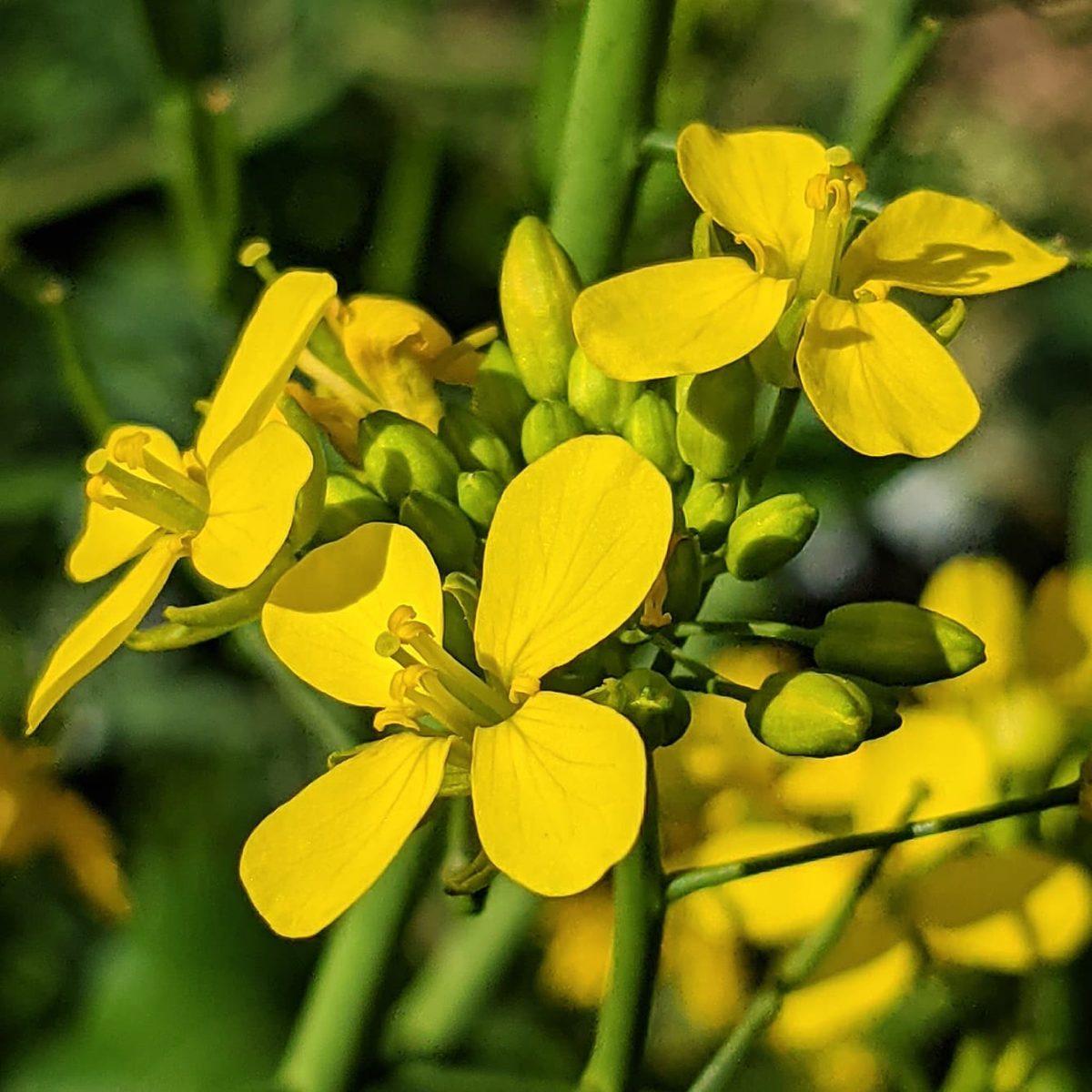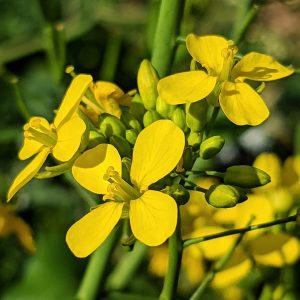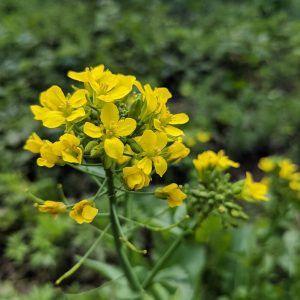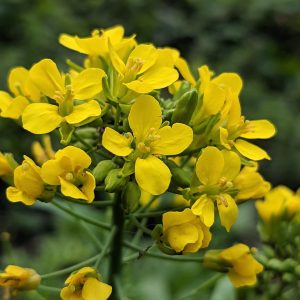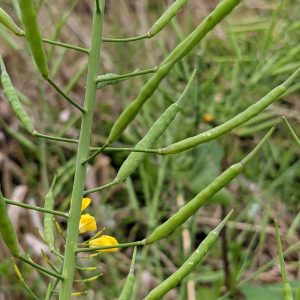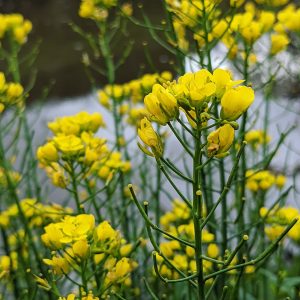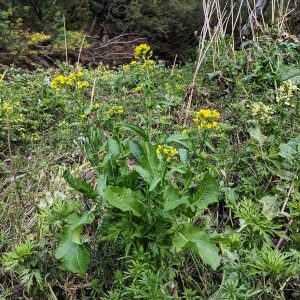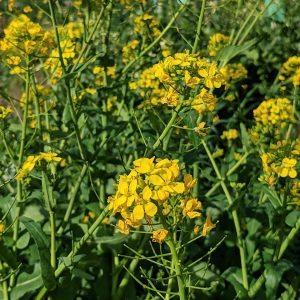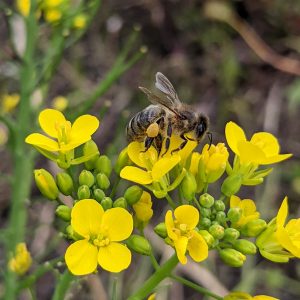Field Mustard (Brassica rapa), a yellow-flowering turnip sometimes grown as a fallow or forage crop.
This plastic Eurasian species has formed the genetic base for numerous cultivated greens, roots and oilseeds. The generic strain of the plant was cultivated in Australia as a fallow crop in wheat fields and as a winter forage, and no doubt introduced as well as a contaminant in hay and seed grain. Varieties were also spruiked as potential oilseeds in the country’s higher rainfall areas, although in the modern era the principal oilseed is Canola (Brassica x napus), a hybrid variety. They can be distinguished on the basis that B. rapa opens its flowers above the unopened buds, while in Canola the unopened buds project above the flowers.
A scattering of 19th c. records suggest the plant’s arrival both accidentally and as an early escape from cultivation: in 1893 on NSW’s SW slopes, and in Victoria in 1903 near Horsham and in 1908 around Newport and on Coode Island. However those early sightings do not seem to have achieved a critical mass or evoked popular comment.
This may be a product of increased reporting, but numbers do seem to have increased from the 1960s in Victoria, perhaps from more abundant use of the plant as a winter forage and fallow crop. In Melbourne, it is principally a weed of suburban waterways, gilding disturbed creek banks in spring and autumn, and of damp road verges where enough water collects to sustain it. Moving up onto drier areas, you will find this plant gives way to the Twiggy Turnip (Brassica fruticulosa) or the Giant Mustard (Rapistrum rugosum); we will attend to both shortly.
View Original Post on Instagram
Search for information about Brassica rapa in the Flora of Victoria
View information and occurrences of Brassica rapa on the Atlas of Living Australia
